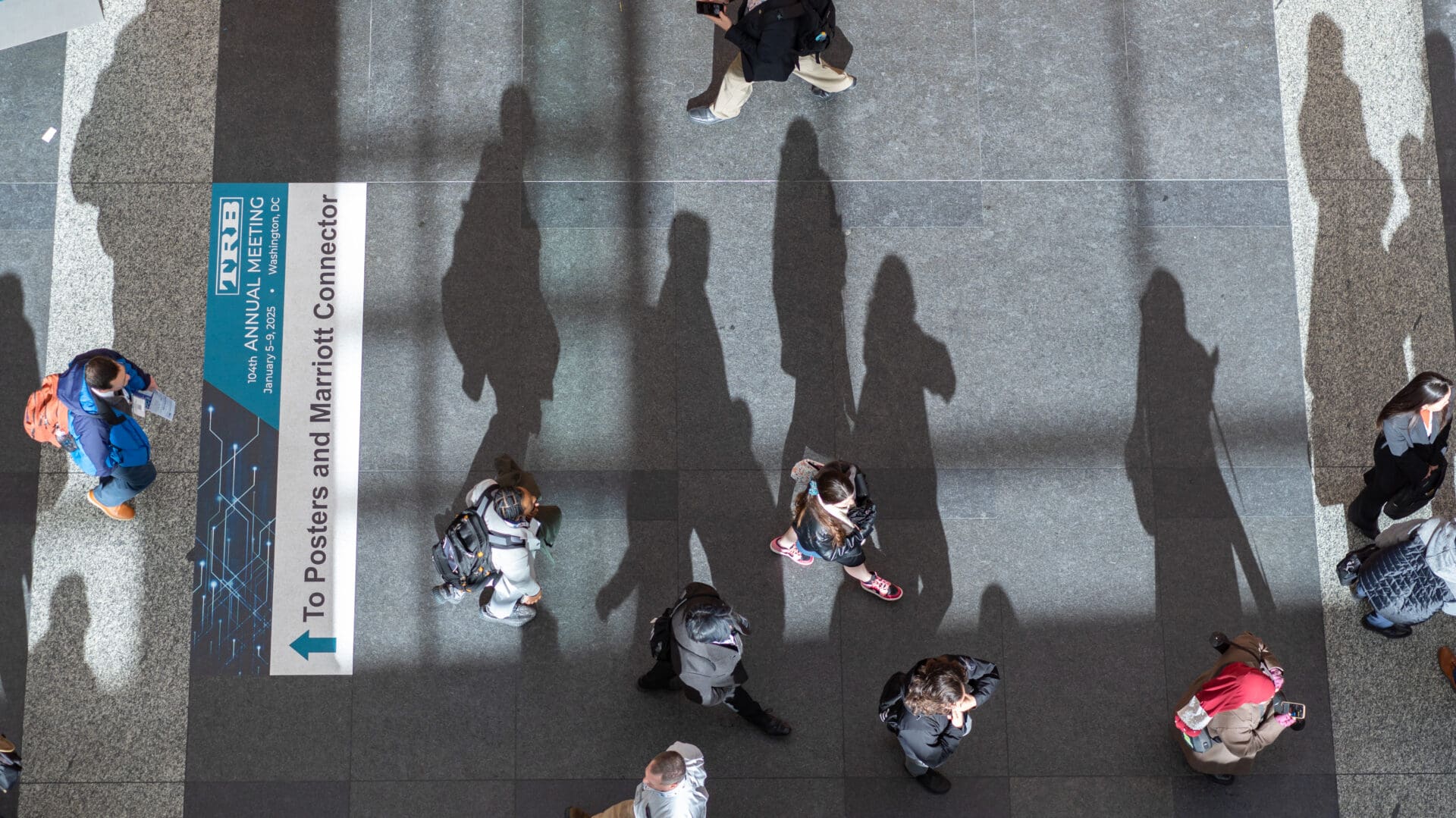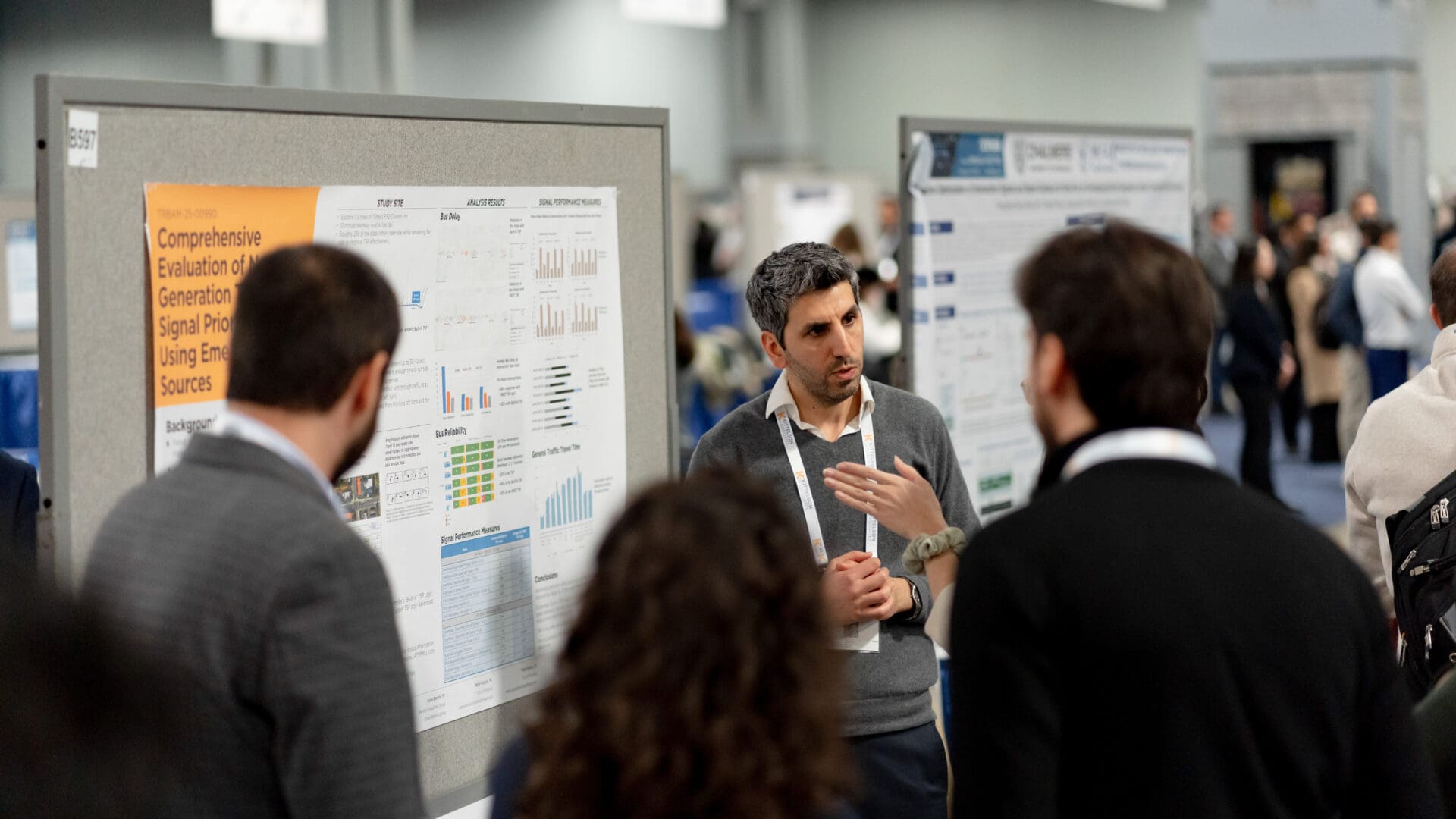January 15, 2025
At the start of each year the Transportation Research Board (TRB) hosts its Annual Meeting in Washington, D.C., and each January we report via Streetwise what we saw, heard, and learned.
Every Annual Meeting is unique. This year, the formidable snowstorm in D.C. offered attendees traveling to the meeting a real-world reminder of the surprises and challenges that can strain transportation systems. The conference programming, meanwhile, provided opportunities to challenge our assumptions, debate new directions, and celebrate how far we have come in advancing our field. Here are some of our observations from the 2025 Annual Meeting.

Looking ahead, the focus of safety initiatives may expand to include different types of roadways.
Safety remains a foundational priority
The TRB Annual Meeting took place at a pivotal moment, with a new federal administration preparing to take office in D.C. Despite the backdrop of change, the sessions reaffirmed a strong and ongoing commitment to making roadways safer for everyone.
Looking ahead, the focus of safety initiatives may expand to include different types of roadways. Programs like Safe Streets For All (SS4A) have primarily focused on urban and suburban areas, but there is growing attention on improving safety in rural regions.
This shift was evident in several well-attended sessions that explored innovative technologies and mobility strategies tailored to rural areas. Supporting this trend, new publications are emerging, such as the upcoming TCRP Synthesis Report (J-07/SB-41), which examines the potential of rural microtransit.

Empathy can serve as a valuable tool to guide our decisions and shape a more inclusive path forward.
Empathy at the intersection
One of the most popular booths at the Annual Meeting offered a vision for how we as practitioners and researchers can move forward. The Empathy at the Intersection Booth, located in the exhibit hall, used practical and virtual reality exhibits to place attendees in the physical and sensory perspectives of a wide array of roadway users. Attendees could sit in different vehicles commonly used for public works (like a bus or a garbage truck) to demonstrate the limited visibility of the vehicles; they could also load their bodies with weights to experience the mobility difficulties many people over the age of 65 contend with every day; they could wear vision impairment goggles to experience the difficulties of mobility with a visual impairment.
These exercises highlighted the tendency to assume that others experience the transportation network as we do. In reality, people’s experiences often differ significantly, sometimes in ways that are hard to envision. As planners and engineers, our work requires us to actively seek out and consider these broad and unique perspectives. Empathy can serve as a valuable tool to guide our decisions and shape a more inclusive path forward.

Beneath the Annual Meeting’s uncertainty, we saw groundbreaking research in the fields of artificial intelligence and machine learning, including better deep training for AI models on near-miss data and traffic anomalies to accelerate first response times, that reminded us that that we’re always finding ways to do what we do faster and more efficiently.
A reminder that transportation is a journey, not a sprint
The 2025 edition of TRB’s Annual Meeting sparked plenty of thought-provoking questions about the year ahead. While much of the programming reflected the upcoming political transition, the current snowstorm, and future changes at TRB, it’s a great reminder that our work is part of a long-term journey with lasting impact.
Beneath the Annual Meeting’s uncertainty, we saw groundbreaking research in the fields of artificial intelligence and machine learning, including better deep training for AI models on near-miss data and traffic anomalies to accelerate first response times, that reminded us that we’re always finding ways to do what we do faster and more efficiently. New insights were provided by the Standing Committee on Bicycle Transportation on the positive effects of e-bike rebates and by the Standing Committee on Traffic Law Enforcement on how treatments such as automated speed enforcement can result in unequal financial impacts on different communities, particularly when deployment patterns are concentrated in specific neighborhoods.
Continue the Conversation
We invite you to share your takeaways from this year’s annual meeting with us on LinkedIn!
